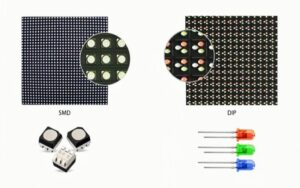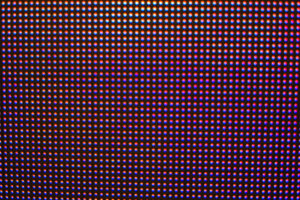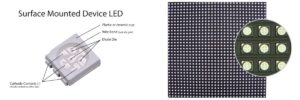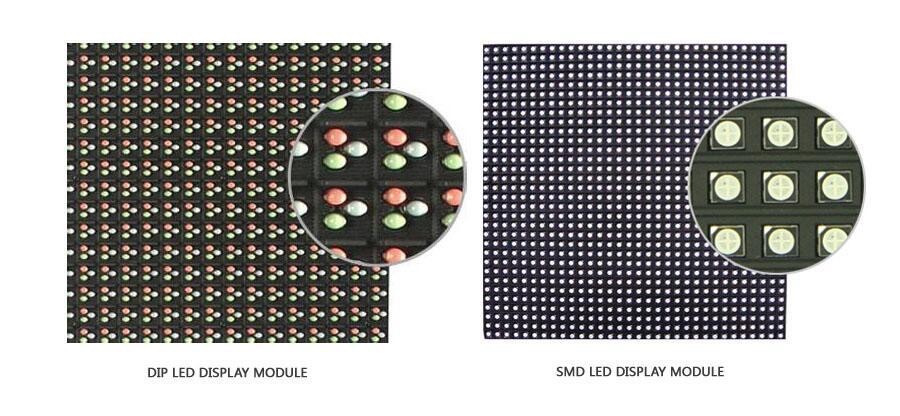Comparing SMD Screens with LED Displays: Pros and Cons
In the world of modern visual technology, the choice between SMD screens and LED displays remains a pivotal decision for businesses and organizations. Both these options offer unique capabilities and advantages that can greatly enhance visual experiences. However, it is essential to understand the pros and cons associated with each before making an informed choice.
In this article, we will delve into a detailed comparison of SMD screens and LED displays, exploring their strengths and limitations to help you navigate through this crucial decision-making process. By shedding light on their distinct features and applications, we aim to provide a comprehensive understanding of the benefits and drawbacks associated with both options, empowering you to make an educated choice that aligns with your specific visual requirements.
Table of Contents
- Headings:
- – Key Factors to Consider When Comparing SMD Screens and LED Displays
- – Pros and Cons of SMD Screens: Unveiling the Benefits and Limitations
- – Unveiling the Advantages and Disadvantages of LED Displays
- – Making the Right Choice: Recommendations for Selecting Between SMD Screens and LED Displays
- Q&A
- To Conclude

Comparing SMD Screens with LED Displays
SMD (Surface Mount Device) screens and LED (Light Emitting Diode) displays are two widely used technologies in the field of digital signage. While both offer stunning visual displays, they have distinct pros and cons that businesses and individuals need to consider before making a decision.
One of the major advantages of SMD screens is their superior color accuracy and natural image reproduction. These screens use a combination of red, green, and blue LEDs tightly packed together, resulting in vibrant and lifelike visuals. Additionally, SMD screens are known for their wide viewing angles, ensuring that the content displayed remains clear and sharp, regardless of where the viewer is positioned. They also tend to have higher pixel densities, which means images and videos appear more detailed and crisp. However, SMD screens can be more expensive compared to LED displays and require more power.
On the other hand, LED displays offer exceptional brightness levels, making them ideal for outdoor applications where visibility is crucial. These displays are designed using individual LED modules, allowing for greater flexibility in creating custom screen sizes and shapes. LED displays also have a longer lifespan and are more energy-efficient than SMD screens, leading to cost savings in the long run. However, they may have a lower pixel density, resulting in slightly less sharp images compared to SMD screens. It is also worth noting that outdoor LED displays may require additional weatherproofing measures to protect them from environmental factors.
In conclusion, when choosing between SMD screens and LED displays, it is essential to consider factors such as color accuracy, viewing angles, brightness levels, pixel density, cost, and energy efficiency. Each technology has its own strengths and weaknesses, so it’s important to evaluate your specific requirements and budget to make an informed decision.
- Key Factors to Consider When Comparing SMD Screens with LED Displays
SMD screens and LED displays are both popular choices for visual display technology, but they have distinct differences that should be considered when making a comparison. One key factor to consider is the pixel pitch, which refers to the distance between pixels on a display. SMD screens typically have a smaller pixel pitch than LED displays, which results in a higher resolution and sharper image quality. This makes SMD screens an ideal choice for applications that require detailed visuals, such as advertising or digital signage in indoor environments.
Another factor to consider is the viewing angle of the display. LED displays typically have a wider viewing angle, allowing for better visibility from various positions in a room. On the other hand, SMD screens may have a more limited viewing angle, which can result in reduced image quality when viewed from certain angles. However, with recent advancements in technology, some SMD screens now offer improved viewing angles that rival those of LED displays. It’s important to carefully evaluate the specific SMD screen or LED display being considered to determine if it meets the desired viewing angle requirements.
Ultimately, the choice between SMD screens and LED displays depends on the specific needs and preferences of the user. While SMD screens may offer higher resolution and LED displays may provide better viewing angles, there can be variations within each type of technology. It’s advisable to test and compare different models to determine which option best suits your specific requirements.

– Pros and Cons of SMD Screens: Unveiling the Benefits and Limitations
SMD screens and LED displays are both popular options when it comes to visual displays, but they each come with their own set of pros and cons. Understanding the benefits and limitations of SMD screens is crucial in making an informed decision for your specific needs.
One of the key advantages of SMD screens is their superior image quality. With their small pixel pitch and high resolution capabilities, SMD screens offer crisp and detailed visuals, making them ideal for applications that require fine details and sharp images. Additionally, SMD screens have wide viewing angles, ensuring that the content can be seen clearly from various vantage points without any distortion or color shifting.
On the other hand, SMD screens do have their limitations. One of the main drawbacks is their relatively higher cost compared to other display technologies. The intricate manufacturing process of SMD screens contributes to their higher price point, making them less accessible for budget-conscious users. Moreover, SMD screens may require more maintenance and regular calibration to maintain their optimal performance, which can add to the overall cost of ownership. It’s important to carefully consider these factors when deciding whether SMD screens are the right choice for your specific application.
| Pros | Cons |
|---|---|
| Superior image quality | Higher cost compared to other technologies |
| Wide viewing angles | Regular maintenance and calibration required |
Remember, when choosing between SMD screens and LED displays, it’s essential to weigh the pros and cons to determine which technology aligns best with your particular needs and budget. Whether it’s for a video wall in a control room, signage display at a trade show, or advertising display in a retail environment, considering these factors will help you make an informed decision to ensure a successful and impactful visual display.
– Unveiling the Advantages and Disadvantages of LED Displays
LED displays have gained popularity in recent years for their numerous advantages over traditional SMD screens. One of the most significant advantages of LED displays is their energy efficiency. LED lights consume significantly less power compared to SMD screens, making them a cost-effective choice for businesses and individuals alike. This energy efficiency not only reduces electricity bills but also contributes to a greener, more sustainable environment.
In terms of visual quality, LED displays offer exceptional brightness and clarity. The use of small LEDs in each pixel allows for greater control over color and contrast, resulting in stunning visuals that easily grab attention. LED displays are also known for their excellent viewing angles, ensuring that the content remains easily visible from various positions and distances. Another advantage of LED displays is their long lifespan. LEDs have a longer operational life compared to traditional bulbs, meaning LED displays require less frequent replacement, saving both time and money in the long run.
However, it is important to consider the disadvantages of LED displays as well. One major drawback is their initial cost. LED displays are generally more expensive to purchase upfront compared to SMD screens. This cost can be a significant barrier for small businesses or individuals with limited budgets. Additionally, LED displays may require specialized installation and maintenance, which can further add to the overall cost.
Furthermore, LED displays can be susceptible to damage from harsh weather conditions, such as extreme heat or cold. It is crucial to ensure that the LED display is properly protected and suitable for the specific environment in which it will be used. Lastly, while LED displays offer vibrant and eye-catching visuals, they may not be suitable for applications that require highly accurate color reproduction, such as professional photography or design work.
In conclusion, LED displays have numerous advantages that make them an appealing choice for businesses and individuals alike. From their energy efficiency and visual quality to their long lifespan, LED displays offer a range of benefits. However, it is essential to consider the potential drawbacks, such as the initial cost and weather sensitivity, before investing in LED displays. Ultimately, the decision between LED displays and SMD screens depends on the specific needs and limitations of each user.
– Making the Right Choice: Recommendations for Selecting Between SMD Screens with LED Displays
In the world of digital signage, choosing the right display technology can be a daunting task. Two popular options that often come up in discussions are SMD screens and LED displays. While both are excellent choices, they have distinct pros and cons that are worth considering before making a decision.
SMD screens, short for Surface Mount Device, utilize tiny surface-mount LEDs to create a seamless and vibrant display. One of the key advantages of SMD screens is their high resolution. They offer excellent image quality and vivid colors, making them ideal for applications where detail and visual impact are of utmost importance. Another benefit of SMD screens is their wide viewing angle, ensuring that content can be seen clearly from virtually any direction. Additionally, SMD screens are known for their energy efficiency, making them an economical choice in the long run. However, they tend to be more expensive upfront and may require professional installation due to their fragile nature.
On the other hand, LED displays, or Light-Emitting Diodes, consist of clusters of LEDs that emit light when voltage is applied. LED displays are highly versatile and can be customized to fit any shape or size, making them a popular choice for unconventional installations. They are also known for their brightness, making them suitable for outdoor use where sunlight may be an issue. LED displays excel in situations that require high visibility, such as billboards or large outdoor screens. They are durable and can withstand harsh weather conditions without losing their performance. However, they may not provide the same level of resolution and color accuracy as SMD screens, and their viewing angle may be more limited.
In conclusion, both SMD screens and LED displays have their own strengths and weaknesses. The decision ultimately depends on the specific requirements of your digital signage project. If you prioritize high resolution and color accuracy, SMD screens are likely the better choice. On the other hand, if versatility and outdoor visibility are more important, LED displays may be the way to go. Consider your budget, installation limitations, and the intended usage scenario to make an informed decision that aligns with your goals and preferences.
Q&A
Q: What is the difference between SMD screens and LED displays?
A: SMD (Surface Mount Device) screens are a type of LED display. The main difference lies in the assembly technique. SMD screens use smaller LED chips mounted onto a circuit board, while LED displays typically utilize traditional discrete LEDs.
Q: What are the advantages of SMD screens over LED displays?
A: SMD screens offer a higher pixel density since the individual LED chips are smaller and placed closer together. This results in a sharper and more detailed image. Additionally, SMD screens often have wider viewing angles and better color reproduction, providing a more immersive visual experience.
Q: Are there any drawbacks to using SMD screens?
A: One of the main disadvantages of SMD screens is their higher cost compared to LED displays. Additionally, the smaller size of the LED chips can sometimes pose challenges in terms of heat dissipation, potentially affecting the overall lifespan of the screen.
Q: What are the benefits of LED displays compared to SMD screens?
A: LED displays generally have a longer lifespan due to the use of larger discrete LEDs. They can withstand harsh weather conditions and are more resistant to impact. LED displays also offer higher brightness levels, making them ideal for outdoor or high ambient light environments.
Q: Are there any drawbacks to LED displays?
A: LED displays typically have a lower pixel density compared to SMD screens, resulting in slightly less detailed images. They may also have narrower viewing angles and slightly lower color accuracy.
Q: Which technology should I choose: SMD screens or LED displays?
A: The choice between SMD screens and LED displays depends on your specific needs and requirements. If you prioritize high resolution, excellent color reproduction, and wider viewing angles, SMD screens would be the ideal choice. However, if durability, brightness, and longer lifespan are your main concerns, LED displays would be a more suitable option.
Q: Is there any other important factor to consider when comparing SMD screens with LED displays?
A: Yes, the specific application or usage scenario should also be taken into account. If the display will be used mainly indoors, such as in retail environments or for digital signage, then SMD screens may offer a better visual experience. Conversely, if the display will be exposed to outdoor elements, such as billboards or stadium screens, LED displays would be more suitable due to their durability and brightness capabilities.
To Conclude
In conclusion, the comparison between SMD screens and LED displays reveals a host of pros and cons that should be carefully weighed before making a decision. SMD screens offer exceptional image quality, seamless integration, and outstanding color reproduction, making them well-suited for indoor applications where clarity and precision are paramount. On the other hand, LED displays excel in outdoor environments, showcasing their high brightness, superior durability, and energy efficiency. However, users must consider the potential drawbacks of SMD screens, such as higher cost and limited viewing angles, while also being mindful of LED displays’ vulnerability to damage and potential difficulties in achieving true black levels. Ultimately, the choice between SMD screens and LED displays should be based on specific usage requirements, desired characteristics, and budget considerations. By carefully evaluating the pros and cons outlined in this article, individuals and businesses can confidently select the optimal display solution that will captivate their audience, enhance visual experiences, and deliver impactful results.


